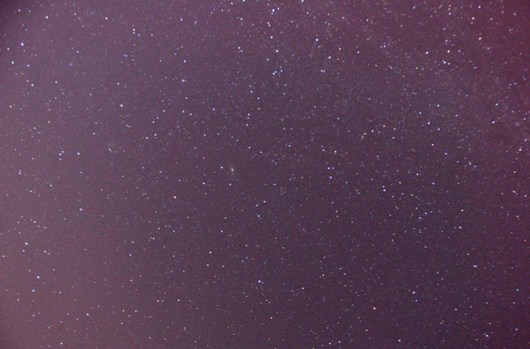07.28
In Astrophotography | Tags: andromeda, galaxy, local group, M31, M33, Messier, Milky Way, spiral galaxy, triangulum
The Andromeda Galaxy (M31) is the star-like object (located just left of center) with a faint cloudy streak passing diagonally through it. What¬†looks like a star is really the galactic bulge, and the cloudy streak is the spiral disc. The Andromeda Galaxy is the closest spiral galaxy to our own Milky Way Galaxy and is “only” 2,500,000 light-years away. The Hubble Space Telescope can see 5,000 times that distance. 5000 times sounds like a lot, but to understand how amazing that number is¬†you have to apply the inverse square law: twice as far means 1/4 the brightness, triple the distance means 1/9 the brightness, and 5000 times the distance means 1/25,000,000 the brightness!


 
Both of these star pictures were taken with my Nikon D300 (equipt with a 18-200 Nikkor zoom lens) in the face of substantial light pollution.
 The Andromeda Galaxy is the largest in the Local Group (a cluster of galaxies that includes the Milky Way Galaxy) with perhaps a trillion stars. Our own Milky Way Galaxy comes in second place with about 300 billion stars, and the Triangulum Galaxy is the third largest with around 40 billion stars.
In the below photo the Andromeda Galaxy definately is visable, while the Triangulum Galaxy (M33) is, perhaps,  just barely visable.
Comments are closed.